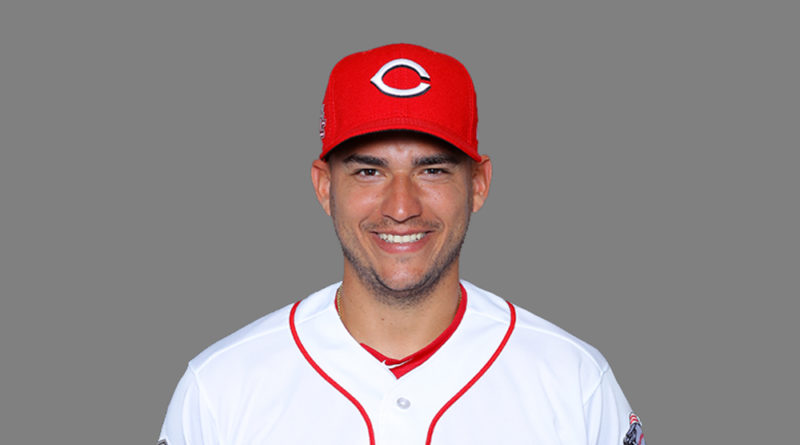A month ago, the Orioles traded away infielder Jonathan Villar to the Marlins in exchange for minor-league pitcher Easton Lucas. Whether you liked the move or not (I didn’t), shedding Villar left the Orioles roster with a few underwhelming possibilities to take over at shortstop: Richie Martin, Hanser Alberto and Pat Valaika.
Unsurprisingly, Martin (-1.0 fWAR, 50 wRC+) was overwhelmed in the majors last season as he fulfilled his Rule 5 requirements. Alberto had a fun season while splitting time between second and third base and was tremendous against left-handed pitching, but he didn’t log a single inning at shortstop last season and is a better defensive fit elsewhere. And Valaika has appeared in parts of four major-league seasons with the Rockies, but he hasn’t had much success and is really a depth piece at best.
In order to allow Martin to get full-time work in Triple-A Norfolk and to keep Alberto at second and third base, the O’s needed to bring in a shortstop. They did just that, according to MLB.com’s Mark Feinsand, by signing Jose Iglesias to a one-year deal with a club option for 2021. As detailed by Dan Connolly of The Athletic Baltimore, Iglesias’s deal is for $2.5 million in 2020 with a $3.5 million option in 2021 and a $500,000 buyout.
This offseason, the O’s have been linked to a number of cost-efficient free-agent shortstops, including Iglesias, Adeiny Hechavarría, Addison Russell and others. Iglesias seemed like the best fit — not only was he available on a one-year deal, but he’s posted an fWAR of at least 1.5 in each of his past six seasons. In an underwhelming crop of free-agent shortstops, he actually performed the best last season and projects as the second-best option in 2020.
Iglesias’s skillset is pretty simple: he’s a strong defensive option up the middle and his bat is not a disaster. Among all qualified shortstops during the last three seasons, he’s tied for seventh in Defensive Runs Saved and third in Ultimate Zone Rating. He also ranks third in FanGraphs’ defense metric.
In that same span, Iglesias posted a wRC+ of 82, which ranks 31st out of 36 shortstops with at least 1,000 plate appearances. Like Alberto, Iglesias doesn’t get on base a bunch or hit for much power, and he also doesn’t walk or strikeout all that much. Career wise, he’s also much better against lefties: 101 wRC+ vs. LHP; 77 wRC+ vs. RHP.
It’s clear the Orioles are signing Iglesias for his glove, but what may be more interesting is something Roch Kubatko of MASN has mentioned about the Orioles and Iglesias a few times this offseason. In November, Kubatko wrote:
“Iglesias has been linked to the Orioles in the past, but he brings some baggage. They did their homework on him last winter, found that he’s developed a reputation as a negative influence in the clubhouse and passed on him.”
Last winter, the Orioles signed Alcides Escobar to a minor-league deal instead of bringing in Iglesias. They ended up releasing Escobar about a month later.
On Jan. 6, Kubatko again noted Iglesias’s “poor reputation in the clubhouse,” but said that “[Iglesias] had no issues with the Reds and became a more enticing option for executive vice president/general manager Mike Elias.”
It’s intriguing to see the Orioles’ about-face on Iglesias, especially considering that he settled for a minor-league deal last year and the O’s felt he still wasn’t worth pursuing until now. Still, there’s minimal risk with such a signing, and it’s not like bringing Iglesias in will have any major impact on the Orioles’ likely dismal season. Regardless, it’s nice to see the O’s address a need and bring in a useful player.
O’s Looking For Upside With Kohl Stewart
A few days before 2019 ended, the O’s snuck in an addition to another position of need — the, uh, whole pitching staff — when they inked right-hander Kohl Stewart to a split contract. That means he could earn $800,000 if he makes the major-league roster, but he can also be optioned to the minors.
The fourth overall pick in the 2013 MLB Draft by the Twins, Stewart split time between the majors and minors in 2018 and 2019 and posted mixed results when he appeared for Minnesota: 4.79 ERA, 4.80 FIP, 0.2 fWAR (62 IP). With a strikeout percentage of just 12.7 percent, he also doesn’t miss many bats.
Stewart has mostly thrown sinkers and sliders in his brief major-league career and uses the pair of pitches about 80 percent of the time. Per Statcast, he has below average fastball velocity and spin, but he does possess strong spin on his curveball. Perhaps Chris Holt, the O’s director of pitching, will prescribe the Astros’ approach of more four-seam fastballs and curveballs. But it’s unclear if Stewart has the arsenal to make such a shift work.
Instead, maybe the Orioles will work to increase the spin rate on Stewart’s fastball but have him keep using the slider (arguably his best pitch) often. Spin mirroring is all the rage these days, so getting the right combination of pitches to play off each other is key.
With so few quality options in both the O’s rotation and bullpen, Stewart has a chance to fill a swingman role and throw a number of innings for the Orioles in 2020. Those aren’t guaranteed to be good innings, but at least there’s some hope for discovering a bit of untapped potential.

